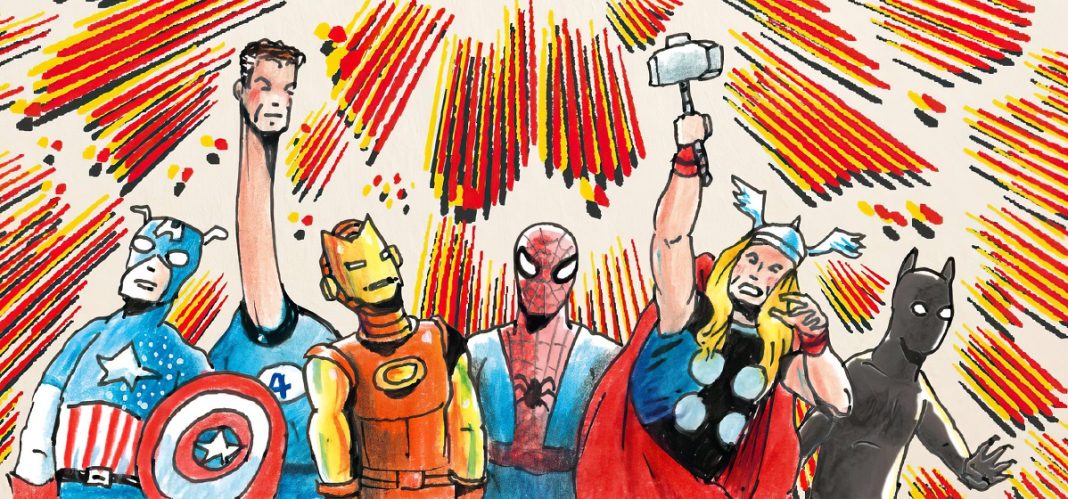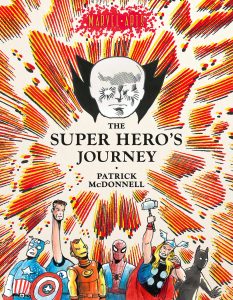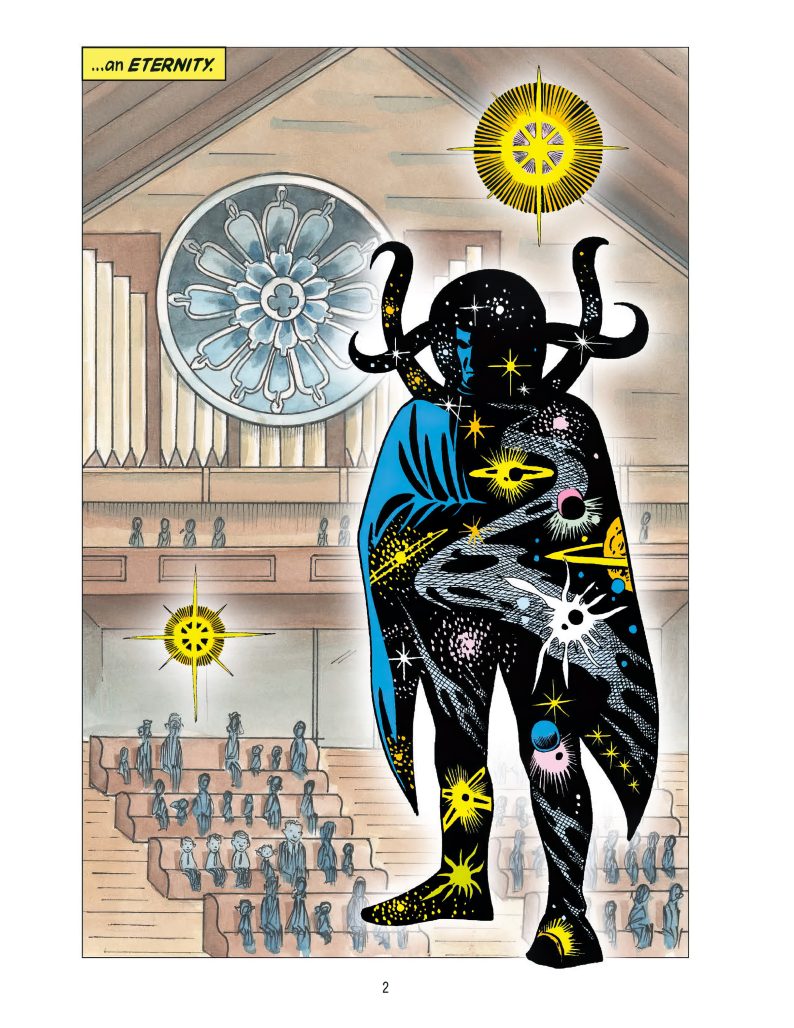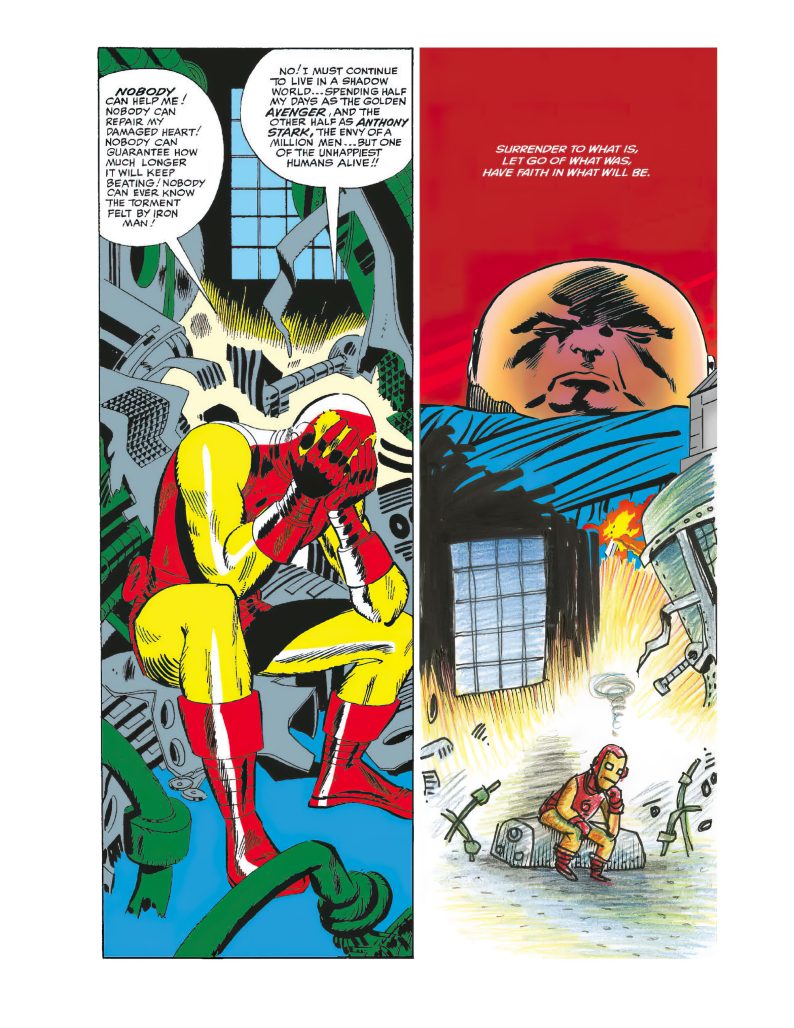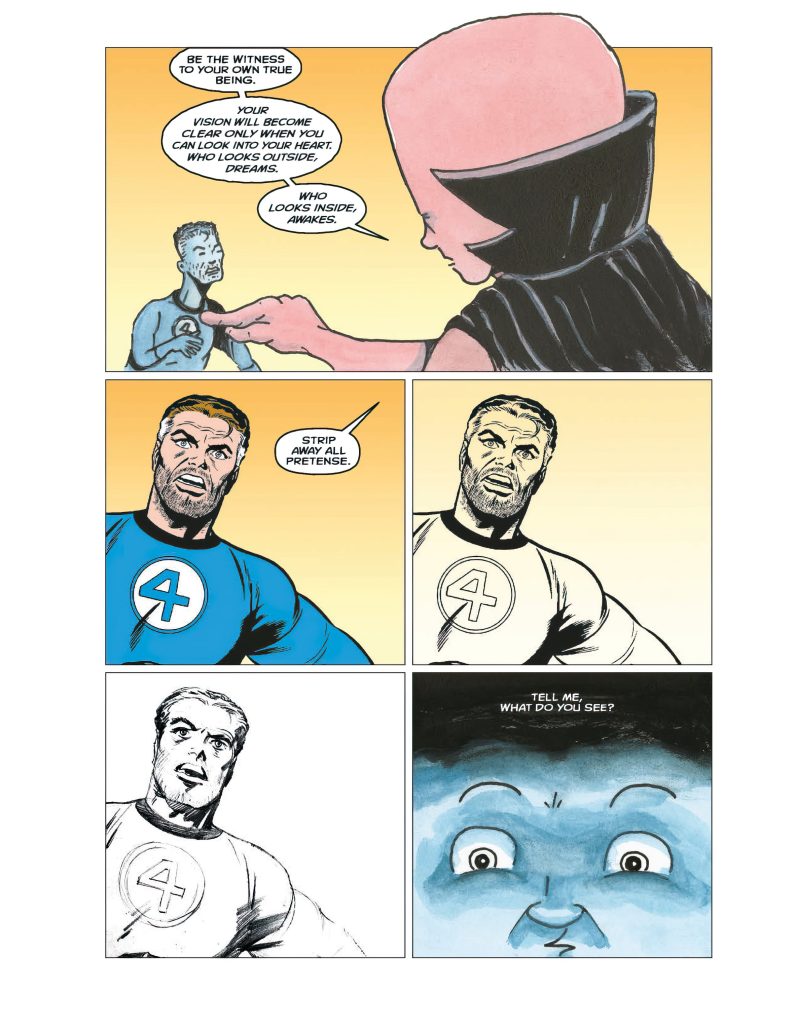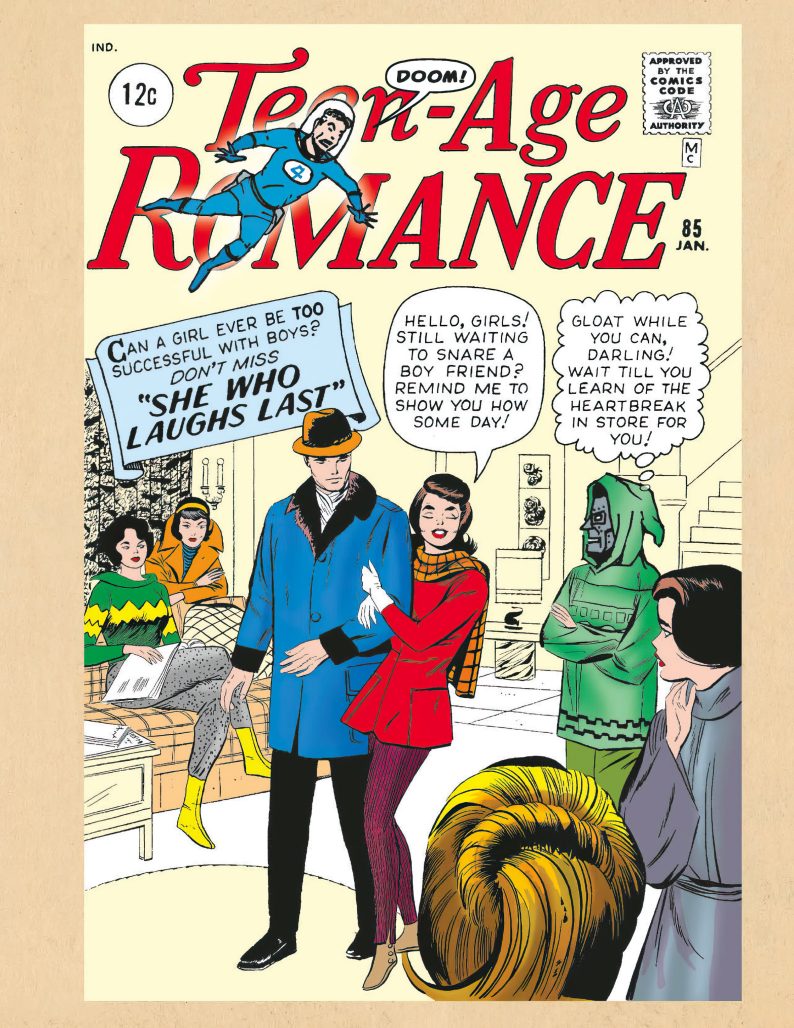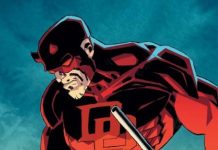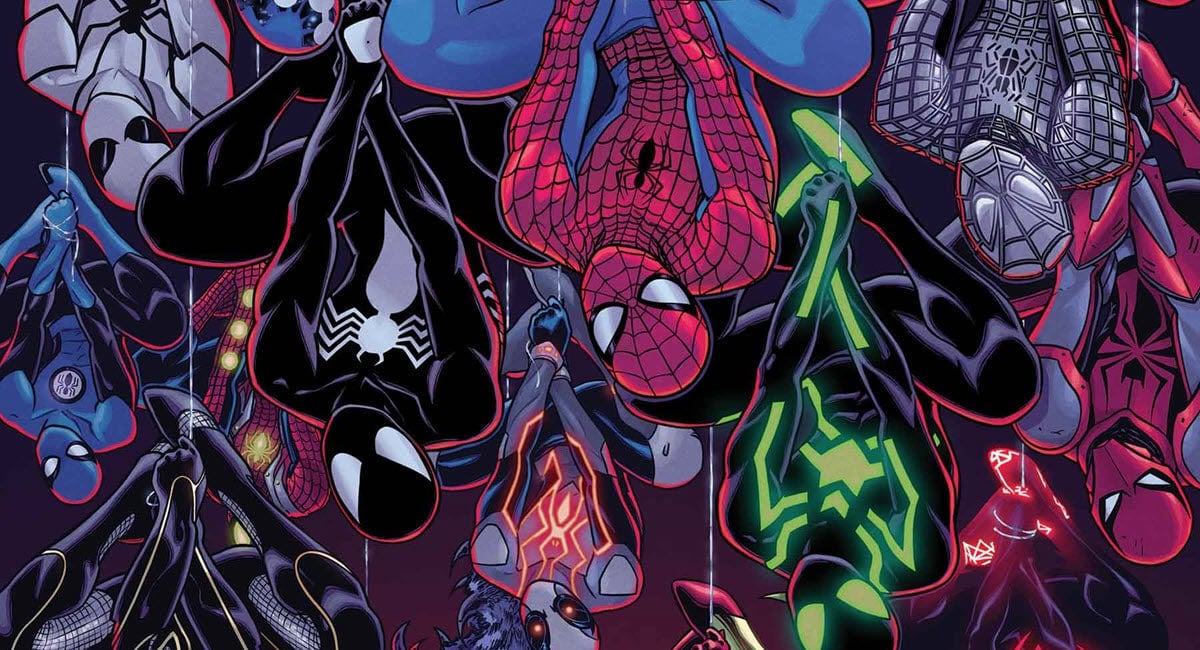 The Super Hero’s Journey
The Super Hero’s Journey
Writer and Artist: Patrick McDonnell
Letters: Todd Klein
Colors: Robert McDonnell
Designer: Shawn Dahl
Publisher: Abrams ComicArts
Last year, Alex Ross launched the MarvelArts line at Abrams ComicArts with his graphic novel, Fantastic Four: Full Circle. Marvel is infamous for its lack of evergreen graphic novels; stories that are reprinted constantly, don’t require knowledge of canon, and stand completely on their own as someone’s first comic. Ross’ Full Circle attempted to be just that: a quintessential Fantastic Four story, beautifully drawn and printed in an oversized format that allows the medium to shine to its fullest potential. Even people like me, who don’t read a lot of Fantastic Four comics, were completely taken in by the artistry and presentation that we just frankly don’t often see with Marvel trades.
This year, Patrick McDonnell follows up Alex Ross with the newest entry in the Marvel Arts line, The Super Hero’s Journey. Told through both original art by McDonnell, and repurposing of classic pages from Stan Lee, Jack Kirby, Steve Ditko, Don Heck and Vince Colletta, this graphic novel follows a collection of Marvel heroes who are faced with the power of overwhelming negativity. McDonnell draws a connection between religious ritual and superhero comics on the spinner rack, telling a framing story where he reminisces on family church trips that were followed by visits to the local Pharmacy, complete with Soda Fountain and a comic book rack. Images of the church are juxtaposed with the image of Lee and Ditko’s Eternity, meanwhile the comics are referred to as McDonnell’s “alter.” The classic Marvel bullpen here become disciples, spreading the word of alternate realities and battles over the fate of the universe.
The story sweeps us away early on with reverence for comics, and specifically the appeal and wonder of a Marvel comics cover. And then it presents the famous Marvel trope that captured childhood imagination: adult problems. Marvel’s 1960’s revolution in comics was centered on heroes with real problems, people that saw their powers as a curse or unwillingly traded away elements of their humanity. That angst is transformed into the story’s metanarrative, a creative choice to make these heroes depressed is turned into a plan by Dr. Doom to spread negativity and conflict. McDonnell has no shortage of material to work with here, as Thing and Johnny Storm fight, Iron Man broods, and the Hulk is unable to find peace all in the pages of original Marvel art.
McDonnell shifts between his own art style and classic art with transition pages that feel like they give life to this existential angst. Detailed drawings are transformed piece by piece until the emotional core is laid bare, and we’re left to ask the basic questions of who these characters are and what they want.
The choice to shift back and forth between these two styles helps to encapsulate the inherent tension between a child’s perspective on the superhero world and the more mature nature of the stories being told. McDonnell feels as if he’s calling attention to how the often complicated frustrations of a typical Marvel hero can often be remedied by the simplified concepts of good and evil that a child brings into existence. If the spinner rack is indeed the alter, then these are the stories of Gods and Devils which appropriately end in clear moral lessons.
The most interesting choice in the comic is the use of quotes from a variety of comics creators, philosophers, and religious figures uttered from the perspective of the Watcher. McDonnell cites everyone from Henry David Thoreau to Carl Jung and Eckhart Tolle. Tolle in particular is perhaps the origin of many of the religious allusions in the story, blending existential questions with a divine sense of purpose and moral clarity. McDonnell is able to seamlessly move between 60s superhero dialogue and new age proverbs in a way that again straddles the line between adulthood and childhood.
In posing these questions and quotes to a child’s heroes, McDonnell is trying to articulate what exactly the morals, character and expectations of superheroes are, and how a child might understand their emotions and conflicts. The story never feels like it’s speaking down to its audience, nor is it over indulging in intellectual jargon. Rather, there is a loving approach here of trying to bring out the essence of what the life and death battles of the universe in a Marvel comic might mean in a more human way. If Galactus makes us feel like the world is ending, what is that feeling in service too?
Dr. Doom and Reed Richards appropriately take center stage here. While the Watcher is our guide, he serves more as the audience’s point of view. Reed and Doom, on the other hand, progress through the comic book reading experience and use the knowledge of the reader to inform their choices. Reed ultimately comes to terms with his own guilt over the accident that created the Fantastic Four in the first place, and Doom is forced to reconcile with the insecurities that drive him. The two characters function as the embodiment of both our knowledge and power in service to negativity and positivity. They are two sides of the same coin.
The confrontations between Reed and Doom allow for some fun interactions. Reed is allowed to travel the comics universe and experience everything from Romance Comics covers to a classic Marvel No-Prize. In these travels, there is an air of nostalgia for how reading Marvel comics used to feel, with careful attention to the details of comics ads and the often overly heavy Stan Lee-style narration. There is both humor and a touching representation of how our humanity is played out between aliens, superheroes and cosmic entities.
McDonnell’s The Super Hero’s Journey is another win for the MarvelArts line. It takes a unique artistic approach to gently guide us through the experience of being a comic book fan, while at the same time pushing the characters to confront the human flaws and aspirations that created them in the first place. The repurposing and blending of classic art with McDonnell’s own style makes for some of the most unique art in a Marvel comic, and the philosophical underpinning of the story and the Watcher’s perspective drive home the larger than life questions that drive us to create heroes and villains in the first place.
Verdict: BUY
Check The Beat’s review section for a new graphic novel review every Friday in 2023!
The Super Hero’s Journey is available now!
An earlier version of this review incorrectly listed the designer of the book. It was designed by Shawn Dahl.


